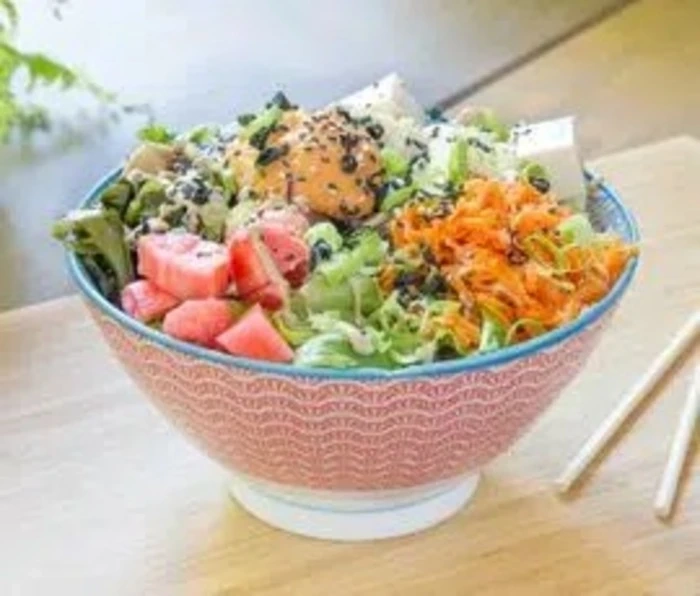Poke, the Hawaiian dish that has taken the culinary world by storm, is a feast for the senses. Its vibrant colors, fresh ingredients, and tantalizing flavors have captivated food enthusiasts worldwide. But one question frequently arises when discussing poke: Is it cooked or raw? In this article, we'll delve into the world of poke to unravel this culinary mystery, exploring its origins, preparation methods, and the variations that have made it a beloved global sensation.
Understanding the Origins of Poke:
To comprehend the "cooked or raw" debate surrounding poke, it's essential to understand the dish's origins. The word "poke" itself means "to cut" in Hawaiian, referring to the way the primary ingredient, typically seafood, is prepared and cut into bite-sized cubes. Traditional poke is deeply rooted in Hawaiian culture, dating back centuries to the indigenous peoples of the Hawaiian Islands. It was a simple dish made with ingredients like fresh fish, sea salt, seaweed, and crushed kukui nuts.
Traditional Hawaiian Poke: The Raw Essence:
Traditional Hawaiian poke is characterized by its raw ingredients. The primary component is typically high-quality, sashimi-grade fish like ahi tuna, salmon, or octopus, cut into cubes. These cubes are seasoned with ingredients like Hawaiian sea salt, limu (seaweed), and cinnamon (a condiment made from roasted kukui nuts). The seasoning enhances the natural flavors of the fish without cooking it.
The authenticity of traditional Hawaiian poke lies in the simplicity and purity of its ingredients. The focus is on showcasing the freshness and quality of the fish, allowing its delicate texture and flavor to shine through. In this form, poke is undeniably raw.
The Influence of Global Cuisine:
As Poke gained popularity beyond the shores of Hawaii, it underwent various transformations influenced by different culinary traditions and preferences. The "cooked or raw" debate stems from these variations:
1. California-Style Poke:
California-style poke brings a fusion of flavors to the table, blending elements of traditional poke with California's love for innovation and diversity. In California-style poke, you'll find a broader selection of proteins, including cooked shrimp, tofu, or even chicken. While the traditional raw fish poke remains popular, this variation introduces cooked options, catering to a wider range of preferences.
2. Sushi-Inspired Poke:
Sushi-inspired poke bowl aims to replicate the flavors and textures of sushi rolls in a bowl format. While some elements of sushi-inspired poke may be raw, such as sashimi-grade fish, it often incorporates cooked or prepared ingredients like seaweed salad, pickled ginger, and tamago (sweet Japanese omelet). These additions make it a hybrid of cooked and raw components.
3. Spicy Poke:
Spicy poke bowls, while primarily featuring raw fish, incorporate spicy elements like spicy mayo or chili-infused sauces. These sauces add a spicy kick to the dish, making it a favorite among spice enthusiasts.
4. Cooked Seafood Variations:
Some poke variations feature cooked seafood options like shrimp, crab, or even grilled chicken. These variations are fully cooked and offer an alternative to those who prefer their proteins cooked rather than raw.
5. Soba Noodle Poke:
Soba noodle poke bowls introduce cooked buckwheat soba noodles, which are typically boiled before being added to the bowl. The presence of cooked noodles makes this poke variation distinct from traditional raw fish poke.
6. Tofu Poke:
For vegetarians and vegans, tofu poke provides an entirely plant-based option. Tofu is typically marinated and seasoned, offering a protein source that is entirely cooked.
The "Is Poke Cooked or Raw?" Conundrum:
Given the numerous variations of poke that have emerged, it's no wonder that the "cooked or raw" debate can be perplexing. The answer to this question largely depends on the specific type of poke you choose to enjoy.
Traditional Hawaiian Poke: Authentic Hawaiian poke, as its name suggests, is raw. It features raw, sashimi-grade fish seasoned with simple ingredients like sea salt and seaweed.
California-Style Poke: California-style poke can be either raw or cooked, depending on your protein choices. If you opt for raw fish, it follows the tradition of raw poke. However, cooked protein options, such as shrimp or tofu, provide a cooked alternative.
Sushi-Inspired Poke: Sushi-inspired poke typically includes both raw and cooked elements, drawing inspiration from sushi rolls that feature a combination of raw fish, cooked seafood, and prepared ingredients.
Spicy Poke: Spicy poke primarily features raw fish but incorporates spicy sauces, introducing a cooked component through the sauce itself.
Cooked Seafood Variations: Variations with cooked seafood are entirely cooked, offering a departure from the raw tradition of poke.
Soba Noodle Poke: Soba noodle poke introduces cooked noodles, making it a cooked variation of the dish.
Tofu Poke: Tofu poke is entirely cooked, catering to vegetarians and vegans.
The Beauty of Customization:
One of the strengths of poke is its adaptability and versatility. It can be customized to suit individual preferences, dietary restrictions, and culinary influences. Whether you prefer your poke raw, cooked, or a combination of both, there's a poke variation to satisfy your cravings.
The Importance of Sourcing and Quality:
Regardless of whether you choose raw or cooked poke, one factor remains paramount: the quality of the ingredients. For raw poke, it's crucial to use sashimi-grade fish that has been properly handled, stored, and inspected for freshness and safety. When selecting cooked proteins, such as shrimp or tofu, their quality and preparation play a significant role in the overall flavor and enjoyment of the dish.


